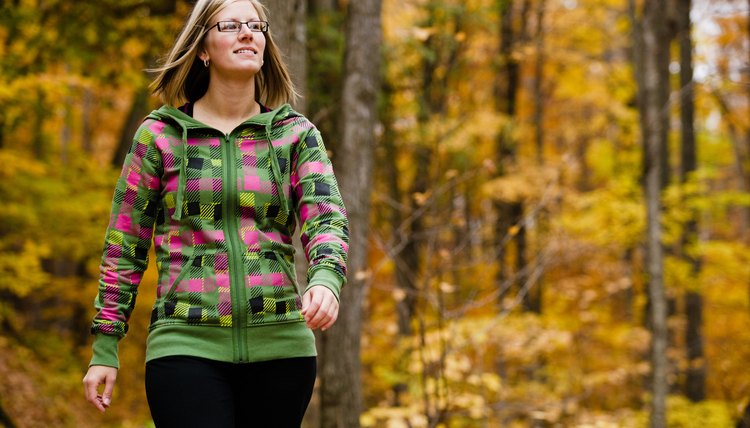What Muscles, Bones and Nerves Are Involved When Walking?

As humans are a bipedal species, walking is your primary means of mobility. Walking daily for your basic needs such as work, exercise or simple leisure and pleasure, it is easy to take the biomechanics of this fundamental process for granted. However, walking is a dynamic series of actions that calls upon a chain of bones, muscles and nerves to work together for your comfort and efficiency throughout each stride and footstep.
The Muscles Involved With Walking
The primary muscles that facilitate walking include the quadriceps and hamstrings in the thighs, the calf muscles in the lower legs and the hip adductors. The gluteal and the abdominal muscles also play a significant role in forward motion. According to May Q. Liu and colleagues in an article for the "Journal of Biomechanics" published in 2006, "Muscles enable walking by providing vertical support and maintaining forward progression," which means that the entire body's muscular system contributes to the movement of walking at any given point.
The Bones That Support Walking
The bones that support walking include those of the feet such as the metatarsals, tarsals and the phalanges bones; the ankle bones; bones in the legs that include the femur, fibula, tibia and patella; and the hipbones. Of course, all of these bones support the movement of walking, but additionally, walking helps to fortify the body's skeletal system. Walking is a safe and low-impact weight-bearing activity; each time you take a stroll, you are building stronger bones.
The Nerves That Send the Messages for Walking
The spinal cord is information central in terms of the nerves involved with walking. The spinal nerves in and at the base of the spinal cord directly affect the walking motion. The specific nerves that support the body's fundamental mobility are the thoracic spinal nerves, lumbar spinal nerves, cervical spinal nerves and the small sacral spinal nerves. All of these nerves work to send neurological messages to the appropriate fibers that allow you to propel yourself forward when you choose to.
Maintaining Good Health for Walking
Walking without pain and, just as importantly, with pleasure may just be the cornerstone of good basic health. As long as you take care of your body, and barring any genetic components or severe injuries, you should be able to walk with ease into your later years. Eat a healthy and balanced diet, maintain a good weight, strengthen your bones by exercising regularly with weight-bearing activities, and make sure you wear good walking shoes and replace them regularly.
References
Writer Bio
Melissa Cooper writes on topics including education, fitness and business, using her Bahelor of Arts in English at Ohio State University. An effective researcher in her expert subjects, Cooper has produced a newsletter and an internal office website that focused on fitness and well-being.
